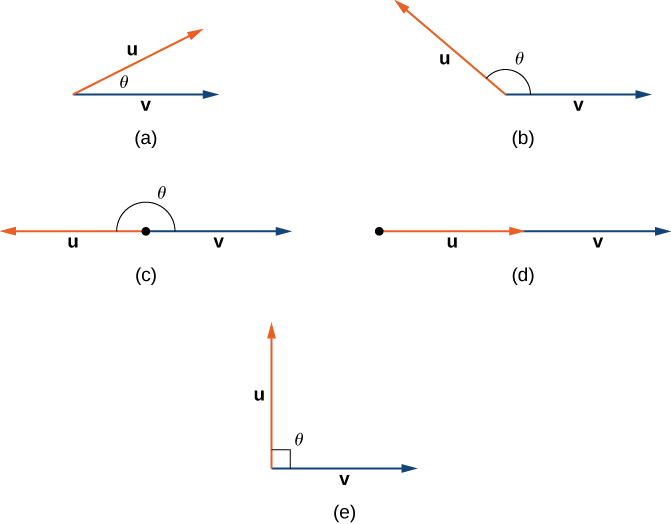| << Chapter < Page | Chapter >> Page > |
Find the measure of the angle between each pair of vectors.
Find the measure of the angle, in radians, formed by vectors and Round to the nearest hundredth.
rad
The angle between two vectors can be acute obtuse or straight If then both vectors have the same direction. If then the vectors, when placed in standard position, form a right angle ( [link] ). We can formalize this result into a theorem regarding orthogonal (perpendicular) vectors.

The nonzero vectors u and v are orthogonal vectors if and only if
Let u and v be nonzero vectors, and let denote the angle between them. First, assume Then
However, and so we must have Hence, and the vectors are orthogonal.
Now assume u and v are orthogonal. Then and we have
□
The terms orthogonal , perpendicular , and normal each indicate that mathematical objects are intersecting at right angles. The use of each term is determined mainly by its context. We say that vectors are orthogonal and lines are perpendicular. The term normal is used most often when measuring the angle made with a plane or other surface.
Determine whether and are orthogonal vectors.
Using the definition, we need only check the dot product of the vectors:
Because the vectors are orthogonal ( [link] ).

Let Find the measures of the angles formed by the following vectors.
Let Find the measure of the angles formed by each pair of vectors.
a. rad; b. rad; c. rad
The angle a vector makes with each of the coordinate axes, called a direction angle, is very important in practical computations, especially in a field such as engineering. For example, in astronautical engineering, the angle at which a rocket is launched must be determined very precisely. A very small error in the angle can lead to the rocket going hundreds of miles off course. Direction angles are often calculated by using the dot product and the cosines of the angles, called the direction cosines. Therefore, we define both these angles and their cosines.

Notification Switch
Would you like to follow the 'Calculus volume 3' conversation and receive update notifications?